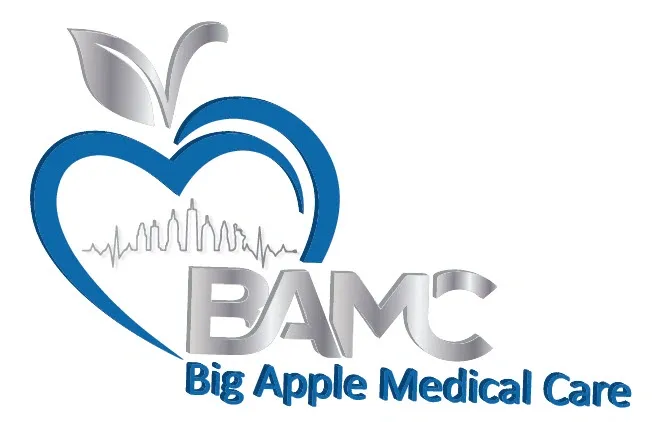Breastfeeding is a natural and powerful process, but it also brings unique challenges. Among these, breast lumps or breast cysts that develop during lactation can cause anxiety for mothers and demand careful evaluation to distinguish benign, self-limiting conditions from those requiring medical intervention. One of the more common benign lesions in breastfeeding women is the galactocele (milk retention cyst). But other types of cysts or masses may appear during lactation, and occasionally, complications or infections can develop. In this article, we’ll explore what galactoceles and related breast cysts are, how they present, when they may be serious, how they are diagnosed and managed, and when mothers should seek specialized care.
Understanding Galactoceles: The Basics
Definition and Pathophysiology
A galactocele (also known as lactocele, milk cyst, or lacteal cyst) is a retention cyst of the breast that occurs when a lactiferous duct becomes obstructed, trapping milk (or milky fluid) behind the blockage. Over time, the trapped milk may thicken, and the cyst may increase in size or become more firm.
Because the breast continues to produce milk (or because residual milk remains), fluid accumulates in the cyst cavity. These cysts are typically benign and are among the most common breast masses encountered in lactating women.
While galactoceles often develop during lactation, they also frequently present during or after weaning, when milk is less actively drained and becomes more stagnant.
Epidemiology & Natural History
-
Among breast lumps during lactation, galactoceles are the most common benign lesion.
-
The size of galactoceles can vary widely — small (1–2 cm) to large (> 10 cm) in rare cases.
-
Many galactoceles resolve spontaneously over time, particularly after the cessation of breastfeeding, when milk production ceases and the cysts may gradually regress.
Because galactoceles are benign and often asymptomatic, many require only observation unless they cause discomfort, concern, or complications.
Other Breast Cysts & Masses During Lactation
While galactoceles are the prototypical lactation-related cyst, other benign masses may arise (or become apparent) during pregnancy or breastfeeding. It is vital to distinguish among them to decide the right management.
-
Simple breast cysts (fluid-filled but not containing milk) — these are common in non-lactating women and can also occur or persist in lactating women.
-
Lactating adenoma — a benign tumor that arises during pregnancy or lactation under hormonal stimulation. It often grows rapidly but tends to regress post-lactation.
-
Fibroadenoma — a benign solid tumor that may enlarge during pregnancy or lactation due to hormonal changes.
-
Complex cystic lesions — sometimes cysts have mixed solid or internal debris, which can complicate interpretation.
-
Granulomatous mastitis — an inflammatory mass seen in women near or after pregnancy, sometimes mimicking malignancy on imaging.
-
Breast abscess / infected cyst — when a cyst (galactocele or others) becomes infected, pus collects and symptoms (pain, redness, systemic signs) emerge.
-
Pregnancy-associated breast cancer — although rare, malignancies can present during lactation and must be excluded when a breast mass persists or behaves atypically.
Because physiological changes in the breast during pregnancy and lactation — increased glandular tissue, higher density, vascular changes — can mask or mimic masses, careful evaluation is essential.
Clinical Presentation: How Do These Cysts Appear?
Galactocele Features
A typical galactocele presents with the following:
-
A painless, palpable lump in the breast, often gradually discovered over days to weeks.
-
The lump is usually well circumscribed, round or oval, mobile (not fixed) and non-tender.
-
The size may fluctuate, often larger when the breast is fuller or just before a feeding/pumping session, and may reduce in size after drainage of milk or between feeds.
-
Typically, galactoceles lack signs of infection: no fever, no skin redness or warmth, no systemic symptoms.
-
Occasional mild discomfort or a pressure sensation may be reported if the cyst becomes large.
Less common variants:
-
Crystallizing galactocele — in rare cases, long-standing galactoceles can show crystal deposits in aspirated fluid, complicating diagnosis.
-
Infected galactocele — develops if bacteria invade the cyst, turning it into an abscess-like process with pain, redness, fluid mixed with inflammatory cells.
-
Simple or non-milk cysts may present similarly (palpable, mobile, maybe slight tenderness) and often are incidental.
-
Lactating adenomas and fibroadenomas typically manifest as solid, well-defined masses, sometimes growing rapidly during lactation.
-
Abscesses / infected lesions present with pain, swelling, warmth, erythema, sometimes fluctuance, possibly fever.
-
Any mass that is firm, fixed, growing, or accompanied by skin changes (dimpling, retraction) or persistent symptoms warrants further scrutiny.
Because breast cancer is rare in lactating women, it is not the most likely cause, but any persistent or worrying mass must never be ignored.
Diagnosis: How Clinicians Distinguish Benign vs Concerning Lesions
Proper evaluation balances the need to minimize invasive procedures with the obligation to rule out malignancy or serious disease. Here is what the diagnostic pathway often includes:
Clinical Interpretation & History
-
A complete history: onset, growth rate, symptoms (pain, redness, systemic signs), breastfeeding pattern, prior breast disease, family history.
-
Physical exam: assessing the mass (size, mobility, consistency), evaluation of overlying skin, nipple or areolar changes, axillary or supraclavicular lymph nodes.
Imaging & Ultrasound
-
Ultrasound is the first-line imaging modality in lactating women because it is safe (no radiation) and effective in characterizing cystic versus solid lesions.
-
A galactocele appears as a well-circumscribed cystic lesion, sometimes with internal echoes (depending on milk density), possible fat-fluid levels, acoustic enhancement behind the cyst.
-
Infected or abscessed lesions may appear more complex (mixed fluid / debris, wall thickening, increased vascularity).
-
-
Mammography is less commonly used in lactating women (dense breast tissue complicates interpretation), but when employed, features such as fat-fluid layers, radiolucent cysts, or “pseudolipoma” appearance may support the diagnosis of galactocele.
-
Further imaging or core biopsy is reserved for atypical or suspicious lesions (irregular margins, solid components, non-resolution).
Fine-Needle Aspiration (FNA) / Aspiration Cytology
-
Ultrasound-guided needle aspiration can both diagnose and treat (by decompressing the cyst). The aspirated fluid typically is thick milky material containing lipids, protein, and lactose.
-
Cytological analysis helps to exclude malignant cells. In rare cases, crystal formations may be seen (crystallizing galactocele).
-
Note: aspiration alone may not completely empty the cyst (because milk is viscous or loculated), and recurrence is common.
Other Laboratory / Microbiology
-
If infection is suspected, fluid from aspiration may be sent for culture and sensitivity to guide antibiotic therapy.
-
Blood work (CBC, inflammatory markers) may show elevated signs in infection or abscess.
Differential Diagnosis & Red Flags
Clinicians must remain vigilant for signs suggesting a lesion is not a simple galactocele:
-
Rapidly growing masses
-
Fixed, irregular borders
-
Skin changes (retraction, dimpling)
-
Persistent masses after weaning
-
Bloody or serous nipple discharge
-
Associated lymphadenopathy
In such cases, referral for core needle biopsy or surgical evaluation is prudent.
Management & Treatment Strategies
Therapeutic approach depends on symptoms, size, risk features, and breastfeeding goals.
Observation & Conservative Management
-
Small, asymptomatic galactoceles that do not interfere with breastfeeding may be observed, with periodic monitoring. Many regress on their own after lactation ends. Supportive measures can include warm compresses, gentle massage (if advised), ensuring effective milk removal via feeding or pumping.
-
Mothers should be taught to monitor changes in size, pain, or new symptoms.
Aspiration / Drainage
-
Symptomatic galactoceles (pain, discomfort, pressure, interference with feeding) are often aspirated under ultrasound guidance. This procedure decompresses the cyst and relieves symptoms.
-
Because milk is viscous and cysts may be loculated, needle aspiration may not fully evacuate the cyst, and recurrence is common.
-
In more persistent or loculated collections, a small stab incision and placement of a drain (e.g. Penrose, Blake drain, wick) may be used to allow passive drainage over several days. This approach helps disrupt septations and achieves more complete drainage in a lactating breast.
-
Some surgical breast surgeons favor this drainage method over repeated aspirations in symptomatic or complicated cases.
Antibiotics & Infection Control
-
If a galactocele becomes infected, antibiotics are necessary. Infected galactoceles may behave similarly to abscesses.
-
Infected cysts should be drained, and aspiration fluid cultured to guide antibiotic selection.
-
Management must balance the need for infection control with keeping breastfeeding viable. In some reported cases, drainage and antibiotic therapy were performed without discontinuing breastfeeding.
Surgical Excision
-
In rare cases when repeated aspirations or drainage fail, and the cyst recurs persistently or has suspicious imaging features, surgical excision may be considered. However, surgery may affect future breastfeeding (ducts may be cut, scarring).
-
Excision is reserved for refractory cases or when malignancy cannot be excluded.
Breastfeeding Considerations
-
In most cases, breastfeeding or pumping is continued even when intervention is required (aspiration or drainage), unless contraindicated.
-
Mothers should ensure effective milk removal, adjust feeding technique or pump settings, and manage oversupply or hyperlactation carefully.
-
After drainage, pressure dressings or gentle compression may help limit re-accumulation (but always under clinician guidance).
When to Worry: Signs That Require Prompt Evaluation
While many breast cysts during lactation are benign, certain situations warrant urgent or specialist assessment:
-
Rapid enlargement of a cyst or mass
-
New onset of pain, redness, warmth, systemic symptoms (fever) — possible infection or abscess
-
Skin changes: dimpling, retraction, peau d’orange
-
Fixed, hard, irregular-feeling masses
-
Persistent masses that do not shrink after cessation of lactation
-
Nipple discharge that is bloody or persistent
-
Lymph node enlargement or other atypical features
In these cases, the mother should be referred promptly for imaging, biopsy, or surgical evaluation to exclude malignancy or severe infection.
Illustrative Case & Lived Experience
Lived Experience: Kenisha’s Story
Kenisha, a nursing mother, discovered a lump in her right breast the size of a golf ball during her early breastfeeding journey. Initially uncertain, she tried pumping before bed, hoping the cyst would reduce, but it did not disappear. After evaluation and imaging, it was confirmed to be a galactocele. During aspiration, about 90 mL of milk was drained, and the swelling subsided immediately. However, the cyst refilled within days. Though frustrating, she continued to breastfeed successfully, as the cyst was not in a region obstructing milk flow. Her doctor noted that full resolution often occurs only after she fully stops lactating.
This illustrates both the benign nature of many galactoceles and the practical challenges they pose to breastfeeding mothers.
Practical Advice for Mothers & Clinicians
For Mothers / Patients
-
Don’t panic, but don’t ignore a new breast lump.
-
Watch for changes in size, pain, signs of infection, or interference with breastfeeding.
-
Keep feeding or pumping effectively — incomplete drainage may worsen retention.
-
Apply warm compresses before feeding to help milk flow, unless infection is present.
-
Seek medical evaluation (preferably with an imaging specialist experienced in lactating breasts) if the lump doesn’t reduce, grows, or develops suspicious features.
-
Be patient — many galactoceles resolve gradually after lactation ends.
-
If intervention (aspiration, drainage) is recommended, collaborate with the care team to maintain breastfeeding if possible.
For Clinicians / Providers
-
In lactating women with palpable breast lumps, always include galactocele in your differential.
-
Use ultrasound first for characterization, and consider biopsy or aspiration when imaging is atypical or symptoms merit.
-
Recognize that aspiration is therapeutic and diagnostic, but recurrence is possible.
-
For symptomatic or recurrent cysts, use drainage with small incisions and drains rather than repeated blind aspiration.
-
Be vigilant for infection, and manage with drainage + antibiotics if needed, balancing with ongoing breastfeeding goals.
-
If a lesion persists after lactation or shows suspicious features, refer for surgical or oncologic evaluation.
-
Educate patients about signs of red flags, self-monitoring, and support breastfeeding as far as possible.
Summary & Final Thoughts
-
Galactoceles (milk retention cysts) are a common benign cause of breast lumps during lactation or post-weaning. They form when milk becomes trapped due to ductal blockage.
-
Other benign breast lesions (such as lactating adenoma, fibroadenoma) or more serious conditions (abscess, malignancy) may also present during breastfeeding.
-
Clinically, galactoceles tend to be painless, mobile, and without signs of infection. Imaging (especially ultrasound) and aspiration are key tools in evaluation.
-
Management ranges from careful observation to aspiration or drainage; surgical excision is rarely needed. Recurrence is not uncommon, especially if milk production continues.
-
Infection complicates some cases and requires more aggressive drainage and antibiotics, sometimes while striving to maintain breastfeeding.
-
Mothers and clinicians must maintain a balance: treat symptoms and rule out serious disease, while preserving breastfeeding whenever feasible.
At Big Apple Medical Care, we understand the emotional and physical challenges faced by breastfeeding mothers. If you notice a lump, pain, or unusual change in your breast during lactation, do not delay seeking professional evaluation. Our breast health team can provide safe imaging, aspiration or drainage as needed, and guide you through care while supporting your breastfeeding goals. Please reach out to schedule a consultation or imaging evaluation whenever needed.







